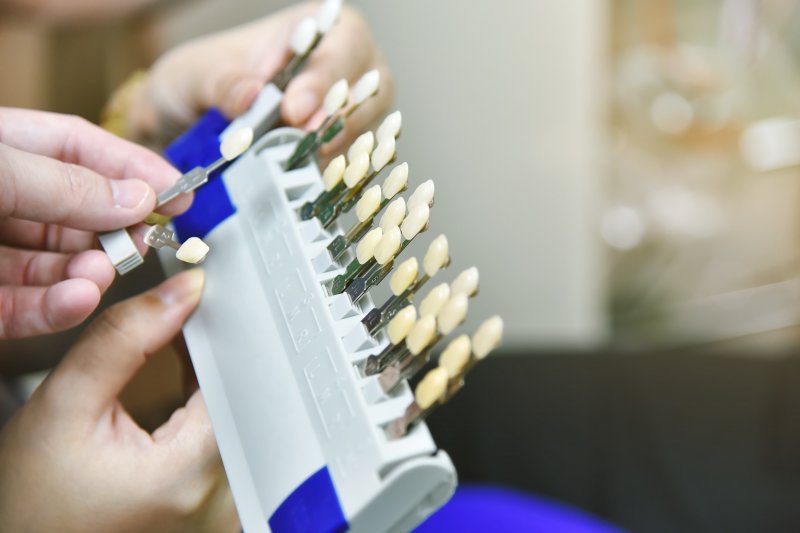
Did you know that dentistry often requires an artistic touch? When designing a dental crown in Kittanning that is meant to resemble a natural tooth, your dentist will have to make sure that it’s the same color as the teeth around it. This is often easier said than done; while everyone’s teeth is within the same range of yellowish off-white color, choosing the right shade can be tricky. Below, you’ll learn more about the color-matching process that your dentist uses to help your crown blend in perfectly.
What are the Factors in Color-Matching?
You might think that you can just get the whitest crown possible for the best results, but oftentimes that’s not enough. The shade chosen needs to look natural in your mouth, which means your dentist will need to consider the following factors:
- Your current age.
- The hue, or color, of your teeth (which will usually fall under the categories of yellow, red, or grey).
- The saturation or intensity of the hue, also known as chroma.
- The value of the tooth’s shade, referring to how light or dark it is.
These variables all have a subtle yet significant impact on the appearance of your tooth. To make sure a crown resembles a natural tooth as closely as possible, it needs an age-appropriate shade with a similar hue, chroma, and value compared to the rest of the smile.
How Color-Matching Works
Your dentist in Kittanning will use a metal or plastic card called a shade guide for the color-matching process. Several fake porcelain teeth are attached to the guide in a specific order. By holding the guide by your real teeth and comparing them to different prosthetics, your dentist can quickly find a similar shade. The guide is designed to help your dentist determine the value of the tooth before comparing the hue and chroma. Oftentimes, a second opinion will be sought before making a final decision.
Color-matching should always be done under natural light conditions – as in, the light that might come in through the window. Fluorescent lights can work as well since they closely mimic natural light. If an overly yellow incandescent light is used, it might make the colors appear different, and that can affect the shade chosen.
Since the color of your mouth and the rest of your face can affect the perception of tooth shade, you may be asked to remove any lipstick or makeup you’re wearing. Also, you’ll need to wear a grey bib so that your dentist has a neutral spot to rest their eyes while checking the shade guide. (The rod cells in the eye that perceive color tire easily and need a chance to rest and reset themselves.)
When color-matching is performed by an expert, the resulting crown should match the tooth so closely that any differences in shade are virtually unnoticeable. It’s a crucial step towards creating a restoration that you can proudly show off with the rest of your grin.
About the Author
Dr. Ray Voller graduated from the University of Pittsburgh School of Dental Medicine in 1980. He is a member of the American Academy of Cosmetic Dentistry, and his training allows him to enhance just about every aspect of the teeth. He has years of experience carefully designing and shading crowns that restore the appearance of the smile while protecting damaged or weakened teeth. To schedule an appointment at his practice, Voller Dentistry, visit his website or call (724) 543-4948.
